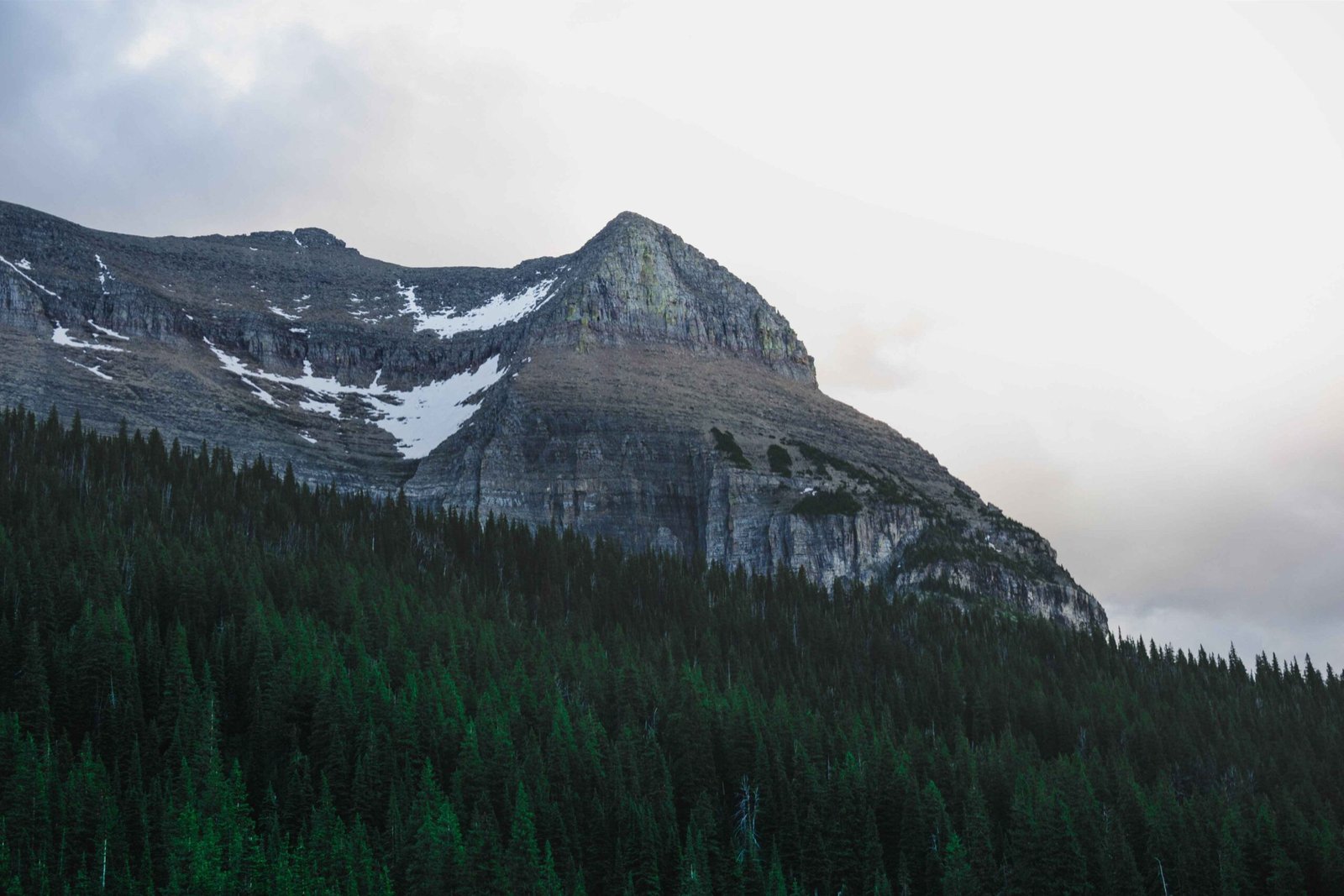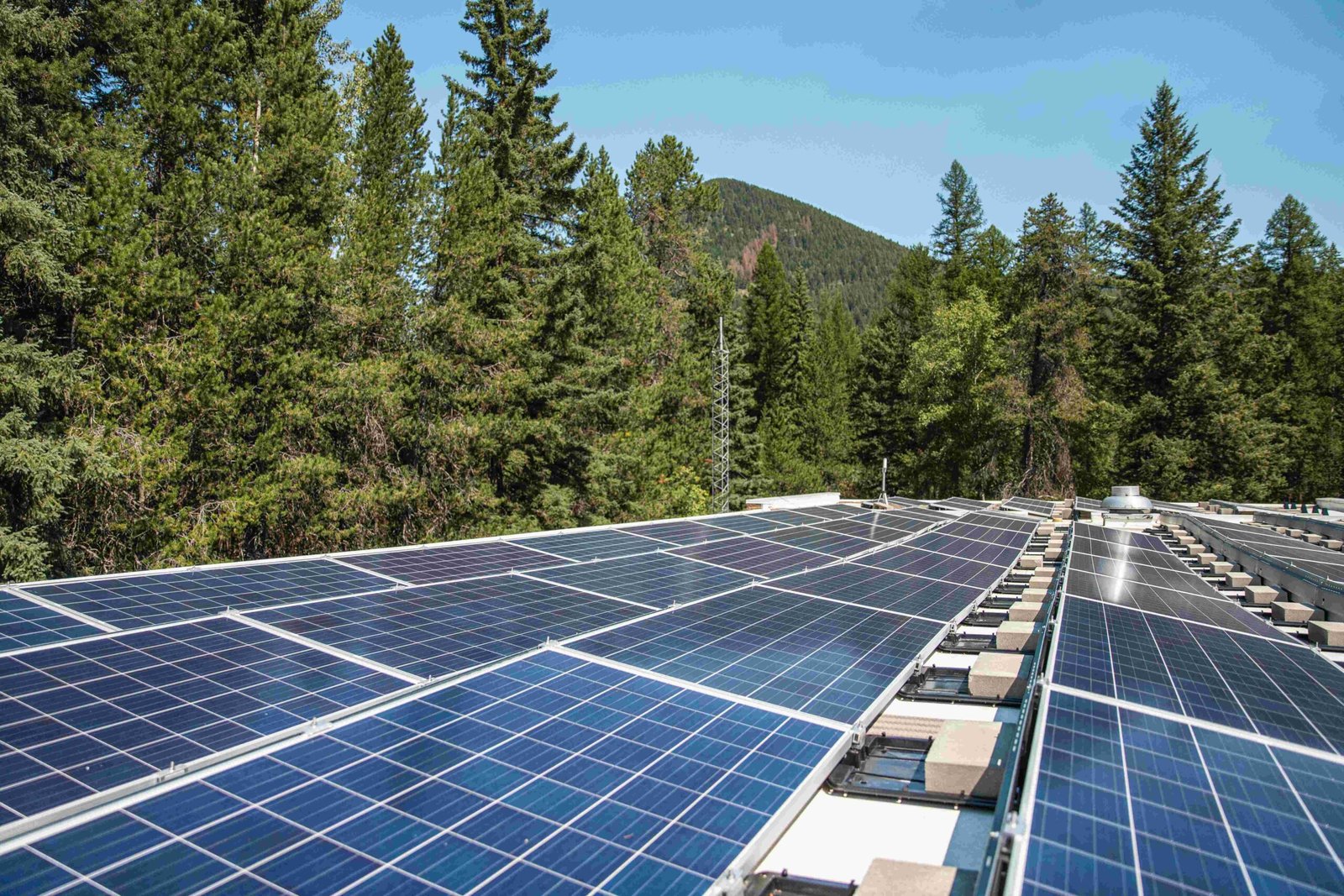Larch trees in Glacier National Park are a captivating feature of the landscape, known for their unique deciduous conifer nature. These majestic trees, primarily Western Larch (Larix occidentalis), thrive in moist locations at elevations between 2,000 to 7,000 feet. They undergo striking seasonal changes, turning vibrant yellow in autumn before shedding their needles. Larch trees play a crucial role in the park’s ecosystem, providing habitat and food for wildlife while contributing to the area’s biodiversity.
What Are the Specific Characteristics of Larch Trees in Glacier National Park?

Larch trees in Glacier National Park, specifically Western Larch (Larix occidentalis), possess distinct features that make them easily identifiable:
- Needle Characteristics:
- Length: 2-3 inches
- Texture: Soft
- Color: Bright green, turning yellow in autumn
-
Arrangement: Clustered on short spurs along branches
-
Bark Texture:
- Mature trees: Thick, deeply furrowed
- Color: Cinnamon-colored plates
-
Thickness: 5-10 inches at age 50, 10-18 inches at age 100
-
Growth Patterns:
- Height: 100-180 feet, some exceeding 200 feet
- Root system: Deep and spreading
- Branch distribution: Upper part of the tree in stands, lower in open areas
- Crown shape: Short, open, and pyramidal
These characteristics make larch trees stand out among other conifers in the park, especially during autumn when their needles change color.
Where Can Larch Trees Be Found in Glacier National Park?

Larch trees in Glacier National Park have specific habitat preferences:
- Elevation Range: 2,000 to 7,000 feet
- Soil Requirements: Well-drained, higher quality soils
- Moisture Needs: Higher than other tree species
Common locations to spot larch trees include:
- Moist alpine and subalpine forests
- Near lakesides and streams
- Areas with associated plant communities like snowberry, ninebark, and kinnikinnick
Popular trails for viewing larch trees in the park include:
- Siyeh Pass Trail
- Ptarmigan Tunnel Trail
- Iceberg Lake Trail
These locations offer stunning views of larch trees, especially during the autumn color change.
How Do Larch Trees Change Throughout the Seasons?
Larch trees in Glacier National Park undergo remarkable seasonal transformations:
Spring and Summer
- Needles emerge bright green
- Trees blend with other conifers
Autumn
- Color Change:
- Needles turn vibrant yellow
- Transformation typically occurs in late September to early October
-
Peak color often coincides with the weeks leading up to Halloween
-
Needle Drop:
- Following color change, needles fall off
- Process completes by late autumn
Winter
- Trees appear bare, resembling deciduous broadleaf trees
- Distinctive silhouette against snow-covered landscape
This unique seasonal cycle sets larch trees apart from other conifers in the park, creating a spectacular autumn display.
What Is the Ecological Significance of Larch Trees in Glacier National Park?
Larch trees play a vital role in the ecosystem of Glacier National Park:
- Habitat Provision:
- Nesting sites for birds
-
Shelter for various wildlife species
-
Food Source:
- Needles and seeds consumed by birds and small mammals
-
Bark and twigs browsed by larger animals like elk
-
Ecosystem Contributions:
- Fire resistance helps maintain forest health
- Deep root systems aid in soil stabilization
-
Deciduous nature contributes to nutrient cycling
-
Biodiversity Support:
- Creates unique microhabitats
-
Supports diverse understory vegetation
-
Climate Resilience:
- Adaptability to changing conditions
- Contributes to carbon sequestration
The presence of larch trees enhances the overall biodiversity and ecological balance of Glacier National Park.
How Can Visitors Best Experience Larch Trees in Glacier National Park?
To fully appreciate larch trees in Glacier National Park, consider the following tips:
- Timing Your Visit:
- Best viewing: Late September to early October
-
Check park updates for peak color predictions
-
Recommended Trails:
| Trail Name | Difficulty | Distance | Larch Viewing Spots |
|————|————|———-|———————|
| Siyeh Pass | Strenuous | 10.3 miles | Upper elevations |
| Ptarmigan Tunnel | Moderate | 10.7 miles | Along the entire trail |
| Iceberg Lake | Moderate | 9.7 miles | Near the lake | -
Photography Tips:
- Early morning or late afternoon light for best colors
- Include contrasting evergreens in compositions
-
Use polarizing filters to enhance yellow hues
-
Safety Considerations:
- Be bear aware in larch habitats
- Prepare for rapidly changing weather conditions
-
Stay on designated trails to protect fragile ecosystems
-
Educational Opportunities:
- Attend ranger-led programs about larch ecology
- Visit the park’s visitor centers for exhibits on local flora
By following these suggestions, visitors can safely and responsibly enjoy the beauty of larch trees while contributing to their conservation.
What Conservation Efforts Protect Larch Trees in Glacier National Park?
Glacier National Park implements several measures to protect and preserve larch trees:
- Fire Management:
- Controlled burns to mimic natural fire cycles
-
Protection of old-growth larch stands
-
Climate Change Monitoring:
- Tracking larch population changes
-
Studying impacts on tree health and distribution
-
Visitor Education:
- Interpretive programs highlighting larch ecology
-
Signage promoting responsible viewing practices
-
Research Initiatives:
- Collaborations with universities for long-term studies
-
Genetic diversity assessments for conservation planning
-
Habitat Protection:
- Restrictions on development in key larch habitats
- Invasive species management to maintain ecosystem balance
These efforts aim to ensure the long-term survival of larch trees in the park, preserving their ecological and aesthetic value for future generations.
Larch trees in Glacier National Park represent a unique and valuable component of the park’s diverse ecosystem. Their striking seasonal changes, ecological importance, and contribution to the park’s beauty make them a focal point for both conservation efforts and visitor appreciation. By understanding and respecting these remarkable trees, we can help ensure their continued presence in this spectacular wilderness for years to come.
References:
1. Smoky Bear: 11 Common Tree Species in Glacier National Park
2. USDA Forest Service: Larix occidentalis
3. Flathead Beacon: Land of the Larch